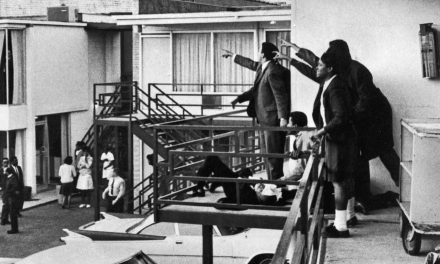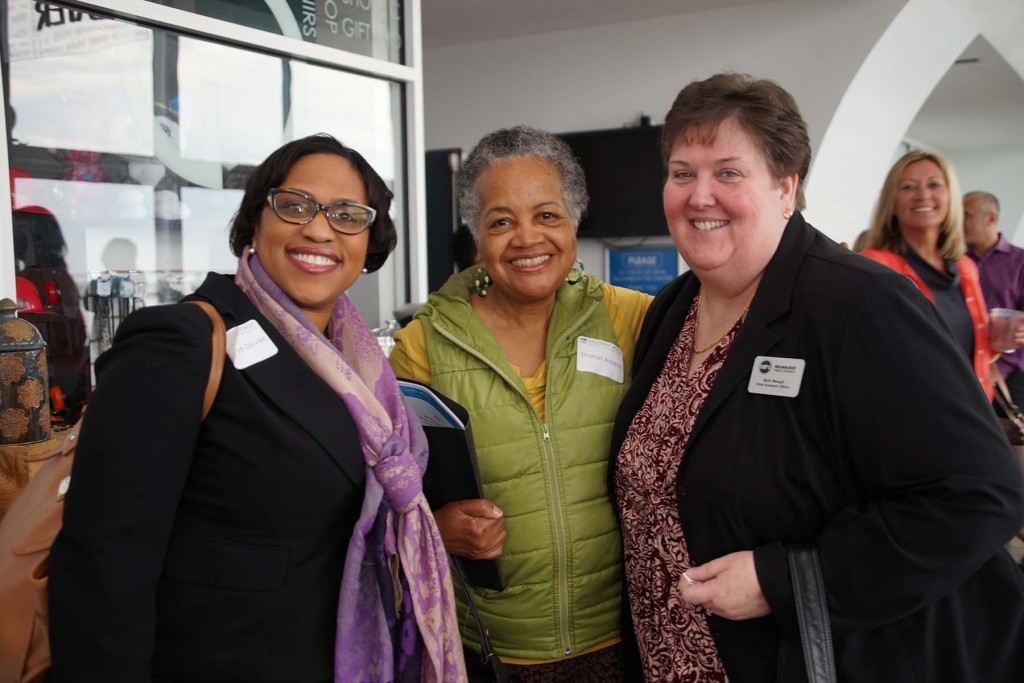
Donald Trump’s presidency did not occur in a vacuum. In a democracy, leadership is not merely the product of those who cast votes for a candidate, but the culmination of societal forces, historical inequities, and collective inaction.
While it is tempting to place blame solely on the individuals who supported Trump at the polls, the reality is far more complicated. By examining voter apathy, entrenched inequities, the modern media landscape, and outdated institutional structures, it becomes evident that each American plays some role in the broader public responsibility for enabling Trump’s rise, and for the subsequent damage wrought by his administration.
THE SOCIAL CONTRACT AND CITIZEN ENGAGEMENT
At the heart of any democracy lies a social contract. Citizens agree to remain informed, vote, and hold their leaders accountable. In return, they expect fair representation and a government that addresses the public’s needs.
Over the years, that unwritten pact has frayed. Millions of Americans did not vote in the 2016 election. Some absences were due to frustration with the political system, others out of a sense of futility, or more notably the fruition of years of disenfranchisement campaigns designed to keep voters from the polls.
The combination of widespread disengagement and disillusionment created a vacuum that allowed a smaller, more energized faction of the electorate to determine the country’s trajectory. That vacuum was not filled overnight.
Democratic engagement in the United States has been on a downward trend for decades, with midterm elections often drawing only a fraction of eligible voters. Community-level activism waned in many parts of the country, allowing local issues to fester unchecked.
By the time Trump began his campaign, he was able to tap into simmering resentments and cynicism about “the establishment.” For every American who saw through his rhetoric, there may have been a neighbor, coworker, or relative who — facing a lack of consistent information and feeling ignored by mainstream politics — opted to believe his promises.
Even those who recognized Trump’s shortcomings should bear some responsibility if they did not work hard enough to enfranchise the disenfranchised, or work to promote reforms that encourage fairer voting practices.
UNEQUAL SOCIETY, UNEQUAL RESPONSIBILITY
Privilege, inequity, and the historical legacies that shaped modern America laid the groundwork for both of Trump’s victories. Policies stretching back decades – such as uneven access to quality education, discriminatory housing practices, and underinvestment in communities of color — created widespread economic and social divides.
Those divides were easy targets for populist appeals, which promised to restore a mythical version of the American dream to those who felt left behind. It was a successful effort to gaslight the truth.
Many White Americans, in particular, benefited from advantages in housing, employment, and education without always recognizing those advantages. When Trump channeled the frustrations of some segments of White America, he was capitalizing on a system that had already fostered resentment and fear of demographic changes.
Whether one personally supported or opposed Trump, the entire country had a hand in maintaining these unequal structures. If privilege and systemic injustices had been addressed with greater urgency in previous decades, the populist message Trump used to galvanize voters might not have resonated so powerfully.
THE MEDIA’S ROLE AND SOCIETY’S APPETITE
Media ecosystems rarely spring up on their own. They reflect the preferences, behaviors, and biases of the public they serve. Over time, American media shifted from traditional outlets that aimed for broad audiences to a splintered environment of cable news, social platforms, and niche websites.
Sensational stories driven for profit often crowd out vital in-depth reporting. Disinformation can travel quickly on social media platforms because it resonates on an emotional level, a trend exacerbated by algorithms that reward extreme content with more visibility and drive revenue.
Trump understood those dynamics well, leveraging platforms like Twitter to bypass traditional gatekeepers. He dominated headlines through provocative statements, often overshadowing other candidates with more traditional approaches.
While critics decried media coverage that seemed to give him free advertising, viewers and readers continued to click, watch, and share his toxic vitriol. The broader public, often attracted to the dark spectacle surrounding his rants, played a role by rewarding his conflict-driven content with attention.
In such a feedback loop, attention to outrageous remarks became profit for media outlets, and media outlets, in turn, gave Trump disproportionate coverage. A lack of demand for quality, thoughtful, or even nuanced reporting also contributed to the crisis.
If readers had insisted on higher journalistic standards and refused to engage with incendiary material, media outlets might have recalibrated their priorities. Instead, the national discourse often revolved around Trump’s daily headlines, amplifying his messages and drowning out critical policy discussions.
INSTITUTIONAL WEAKNESSES AND THE ELECTORAL COLLEGE
The United States has long prided itself on having a stable democratic system, yet the Electoral College — a structure conceived centuries ago to protect the institution of slavery — allowed Trump to secure the presidency even though he lost the national popular vote.
Defenders of the system argue that it prevents less populous states from being overlooked, but critics contend it has become an outdated mechanism that fails to accurately represent the will of the people. The system allows for a minority of the population to have a disproportionate amount of power, upending the foundation of “majority” rule.
That debate did not begin in 2016. Over the years, various politicians and advocacy groups have proposed reforms or even abolition of the Electoral College, yet momentum has repeatedly stalled. Trump’s victory underlined the system’s vulnerabilities, prompting renewed calls for reform.
Still, the institutional inertia that kept the Electoral College in place was the product of collective national choices. Generations of Americans — representing all political affiliations — have resisted structural changes, allowing a system designed in a vastly different era to remain intact.
MOVING BEYOND BLAME AND TOWARD ACCOUNTABILITY
Understanding the shared responsibility for Trump’s presidency and its consequences should not be misconstrued as absolving individuals who wholeheartedly endorsed or carried out harmful policies.
Blame is never evenly distributed, and those who supported or enacted discriminatory legislation, undermined democratic norms or stoked divisions bear the weight of direct participation.
Nevertheless, an awareness of how an entire society can enable such a presidency is essential to preventing its recurrence. Accountability can begin in everyday spaces.
Elected representatives must be pressured to address gerrymandering, voter suppression, and other obstacles to fair elections. Educational institutions can strengthen civic curricula that teach younger generations the importance of democratic participation. Media consumers can demand better reporting, financially support high-quality journalism and remain skeptical of sensationalist coverage.
At the same time, collective introspection can highlight how everyday privileges contribute to larger systems of inequality. Privilege often operates invisibly—such as in job opportunities, policing, and housing. Identifying and challenging these disparities can help disrupt the conditions that allowed Trump’s rhetoric to flourish.
WHEN A PATH FORWARD IS A DEAD END
While the path to making America better relies on collective action, introspection, and systemic reforms, it is critical to confront a darker possibility. It is hard to accept, but a significant portion of Americans will actively reject those efforts.
Instead of striving for progress, they embrace division, harm, and destruction as means to their goals. Beneath the calls for unity and accountability lies an uncomfortable truth. Many Americans may never want to fix what is broken, and instead choose to break it further – driven by resentment, hatred, or a desire for chaos.
Addressing such a possibility requires a different approach, one that acknowledges the willingness of some to prioritize harm over progress, even when it comes at their own expense. That begs the question, what if the fundamental problem is not systemic failures or unchallenged privilege? What if the simple fact is that a significant portion of Americans actively choose to perpetuate harm?
It is hard to concede that their motivations are not rooted in misunderstanding or neglect but in a deeper, mean-spirited desire to tear down institutions, harm others, and revel in chaos because – for whatever reasons – they enjoy it.
It is a grim prospect, but one that must be acknowledged. The daily news headlines since 2016, and revitalized by Trump’s presidential campaign in 2024, show that many Americans have embraced a culture of resentment so powerful that it overrides any sense of collective responsibility.
In this context, calls for civic engagement, better education, and accountability just fall on deaf ears. It is not because people fail to understand the stakes, but because they do not care or thrive on division.
If hatred, selfishness, and willful ignorance dominate the social fabric of American society, the needed solutions go far beyond reforms or education. Because of this, such aspirations may be unreachable.
Fixing a problem requires identifying the problem, and Americans have shown their preference for putting bandaids on systemic wounds. Until Americans are willing to confront the darker truths about themselves and their institutions, progress will remain an illusion, and the cycle of harm will continue unchecked.
“How sad it must be – believing that scientists, scholars, historians, economists, and journalists have devoted their entire lives to deceiving you, while a reality TV star with decades of fraud and exhaustively documented lying is your only beacon of truth and honesty.” – Neil deGrasse Tyson
© Photo
Mikute (via Shutterstock)














